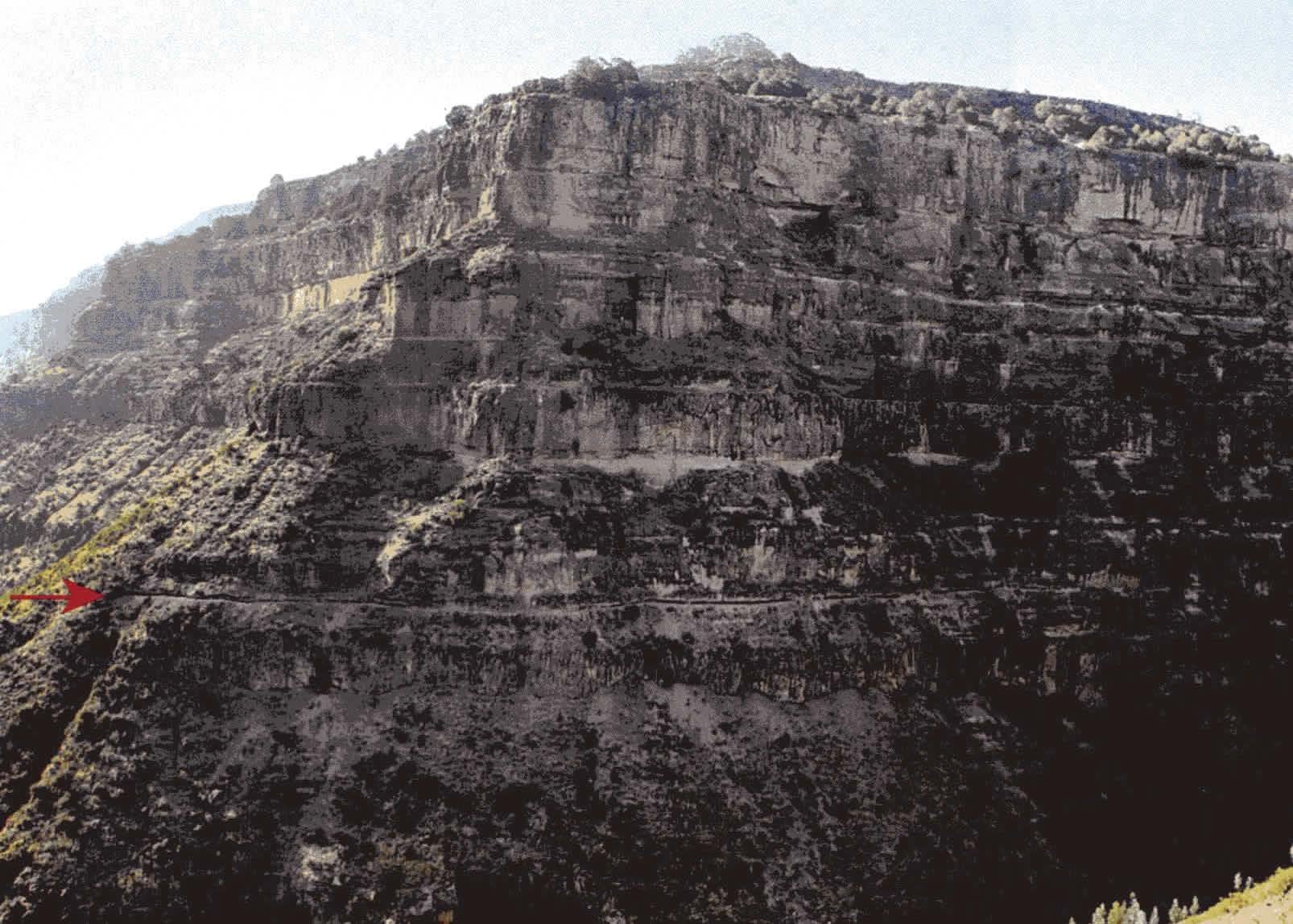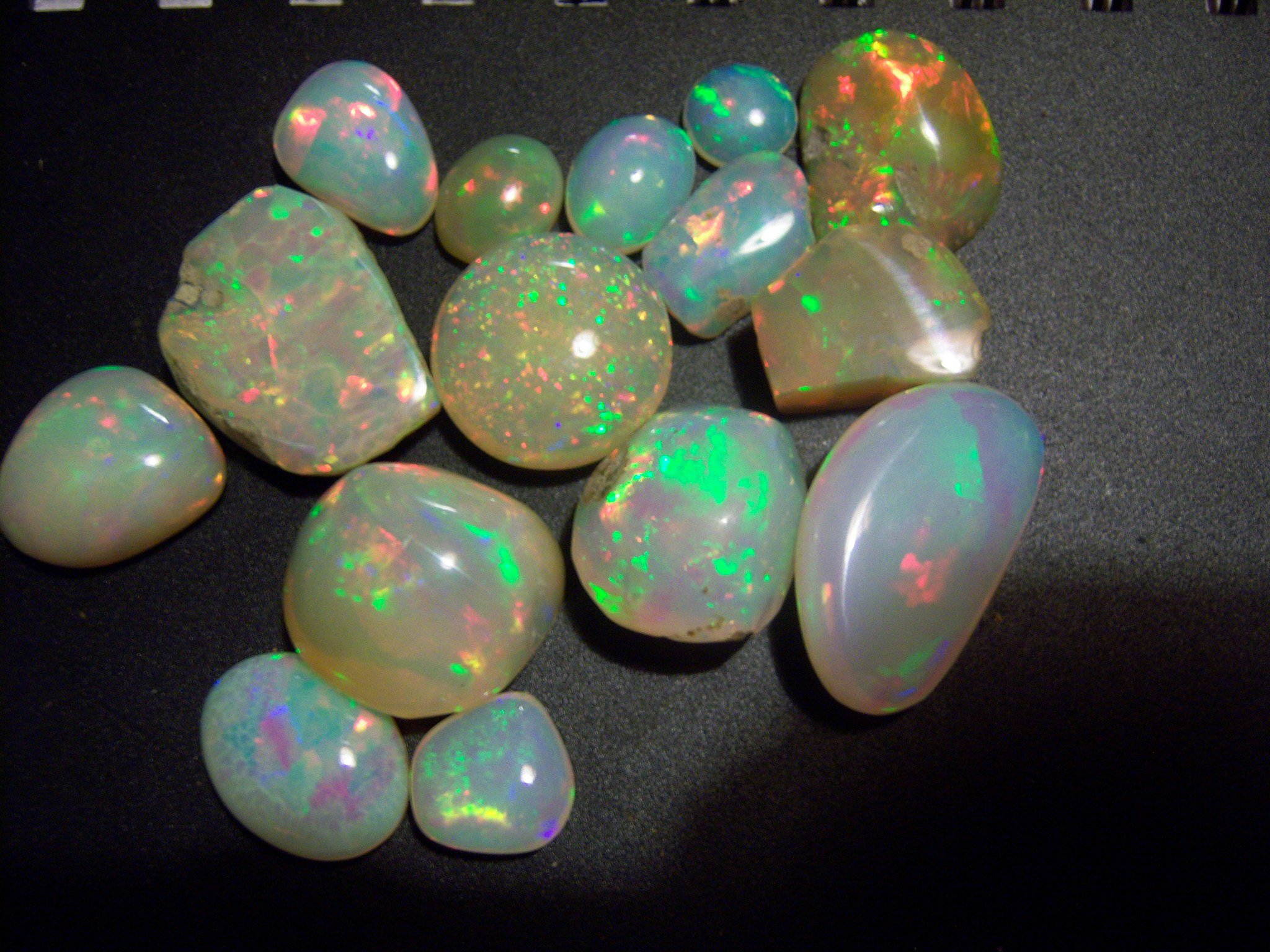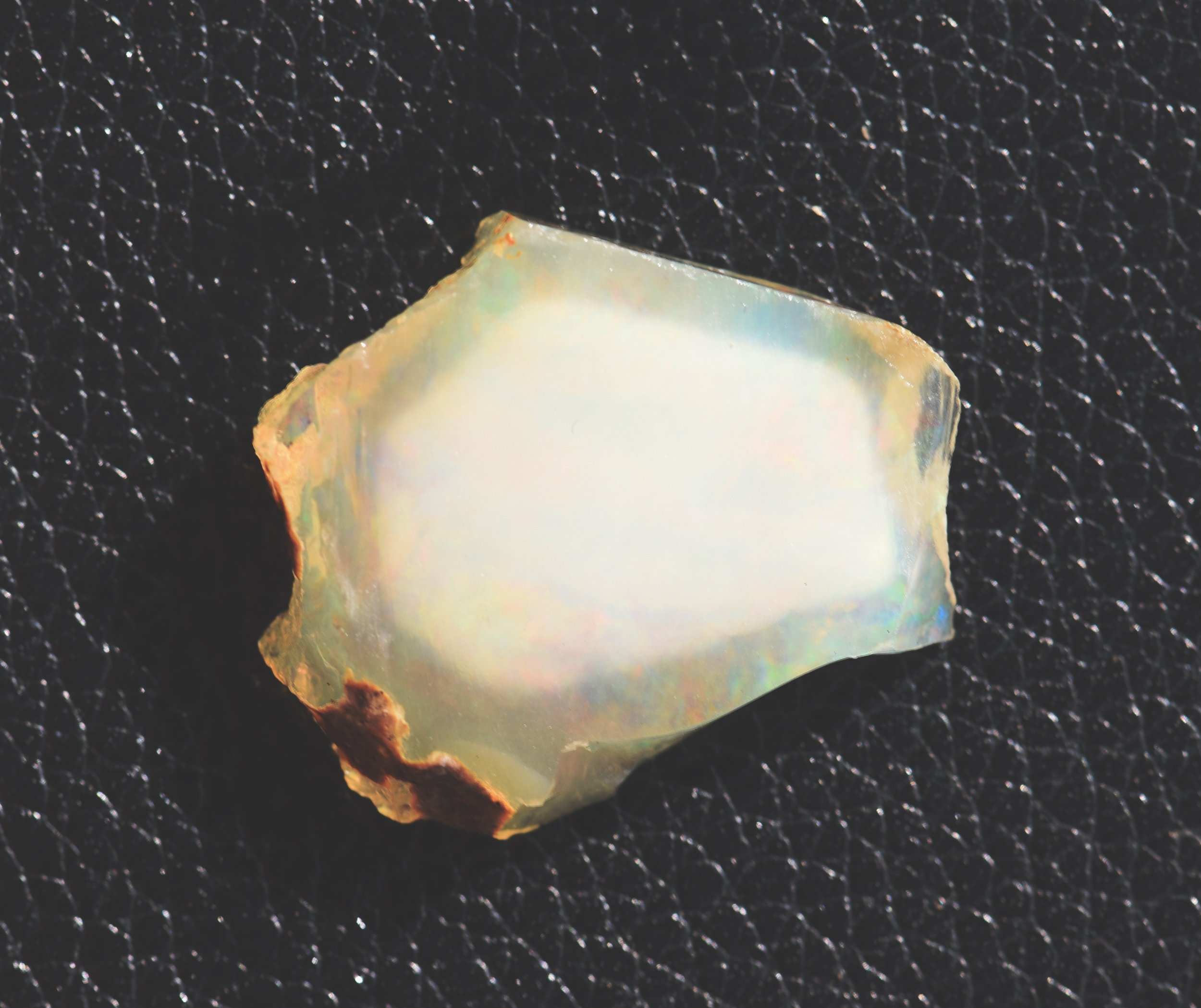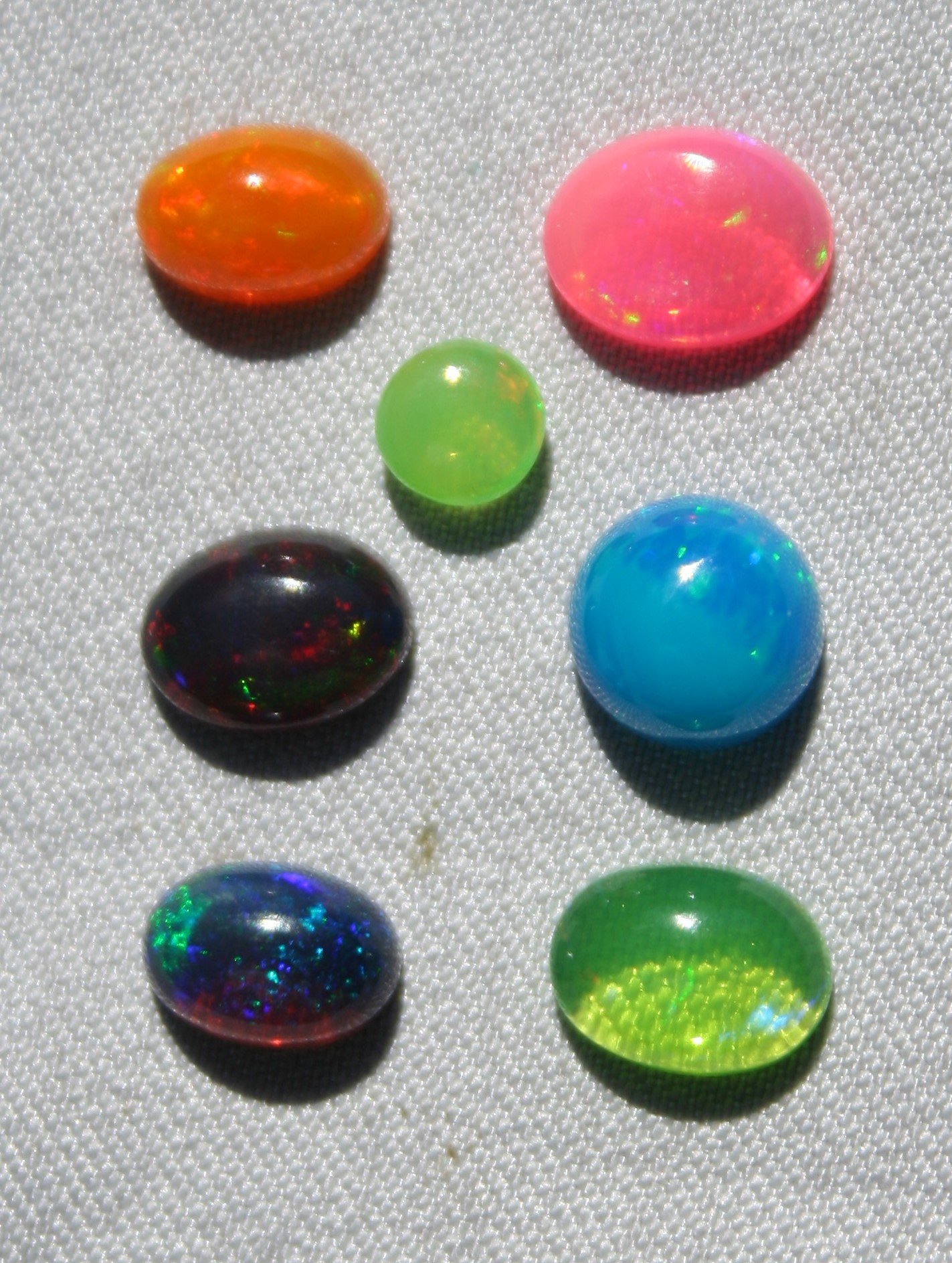OPAL IN ETHIOPIA
A discussion concerning the occurrence of opal in Ethiopia, North Africa.
A LITTLE HISTORY
For this introduction to Ethiopian opal , as curator, we are reproducing a discussion presented in a paper published in the Canadian Mineralogist (Alalew 2020, See literature below). The article clarified the History of Ethiopian opals.
“Opal was discovered in 1978 by indigenous people in the small village of Yita Mikael, in the Menz Gishe District of North Shoa Province. Other articles (e.g. Downing, 1996, Hoover et al . 1996) used the spelling “Shewa”, but the correct spelling of the province name is “Shoa”. The opal of North Shoa Province is traditionally referred to as Mezezo opal. The first report on Ethiopian opals was by Barot (1994) in the ICA Gazette, who reported the appearance of Ethiopian opals at a Nairobi gem market in 1993. Subsequently, Downing (1996) reported the discovery of opals in North Shoa Province. In the same year, Hoover et al. (1996) learned about these opals and started investigating their location, along with obtaining a lease to explore and mine the area. This marks the start of a new supply of stunningly beautiful opals onto the international market.”
A further excerpt from Alalew (2020) states:
“ The most important opal discovery in Ethiopia to date was made in 2008 near the town of Wegel Tena (Wollo Province) in the northern part of the country (Mazzero et al. 2009) A third deposit was found in 2013 again in Wollo Province, north of the Wegel Tena area”.
GEOGRAPHY AND MINING FIELDS
Mezezo area, North Shoa Province, (sometimes incorrectly referred to as “Shewa” in early texts). Hoover (1996) describes the area as being located about 200km north-east of Addis Ababa in a region that is a high volcanic plateau strongly dissected with mountains over 4000m in elevation.
Wegel Tena area, Wollo Province. Rondeau et al. (2010) describes the area as being approximately 550km north of Addis Ababa (and 200km north of the Mezezo area). The opal occurs in a horizontal layer that is exposed on a cliff
The geographic area of Ethiopia map in: Gems & Gemmology, Vol32, 2, See in literature below.
A photo of a village in the Mezezo area, Telahun Yohannes. in Gems & Gemmology Vol32, 2. See reference below.
A map of the geography around the Ethiopian opal mining areas.
A LITTLE GEOLOGY
Shewa Province , Mezezo- Hoover et al
Hoover et al report: The Ethiopian Highlands are principally composed of intrusive and extrusive Tertiary units of the Ashangi group. These consist of alkali olivine basalts and tuffs, doleritic sills and gabbro diabase intrusives……….However, in the area where opal bearing lithophysae occur rocks of the Magdala group predominate…..At the surface, the opal filled lithophysae weather out of the host rhyolite and are found scattered over the ground. The smaller nodules are remarkably spherical …they resemble thunder eggs found in many similar volcanic terrains. You can read more here:
Wegal Tena Rondeau et al.
“the entire region around Wegel Tena consists of a thick (>3000 m) volcano-sedimentary sequence of alternating layers of basalt and rhyolitic ignimbrite. The layers of basalt or ignimbrite are a few metres to hundreds of meters thick…..This volcanic sequence was emplaced with the opening of the East African continental rift during the Oligocene epoch (Cenozoic age) about 30 ma (million years ago) You can read more here:
Geological setting-Boris Chauviré-Canadian Mineralogist
“The Wegel Tena volcanic plateau is part of the Ethiopian traps, which are themselves part of a larger volcanic province covering an area of 6 x 10^5 square kilometres from southwest Ethiopia to Yemen…….The Ethiopian traps roughly consist of a succession of basaltic lavas covered by rhyolitic ignimbrite ………In the Wegel Tena area, this acid sequence attains a thickness of up to 500 metres. It is composed of individual beds 3 to 15 metres thick……..in this study we define “opal-bearing bed” as the bed containing gem opals….
detailed geology of the Ethiopian provinces
The geology of Ethiopia is complex, so we provide a few scientific papers which discuss the geology more specifically.
Ayalew, D. et al . (2002), Source, genesis, and timing of giant ignimbrite deposits associated with Ethiopian continental flood basalts. Geochimica et Cosmochimica Acta, Vol 66, No 8, pp1429-1448.
Ayalew, D., Gibson, SA., (2009), Head to tail transition of the Afar mantle plume: Geochemical evidence from a Miocene bimodal basalt-rhyolite succession in the Ethiopian Large Igneous Province. Lithos, 112 pp 461-476.
Map of geology of Ethiopia in Chauvire and Rondeau listed below.
Stratigraphic Cross-section of the mining area Mezezo, Yita Ridge Ethiopia. The geology is described in article listed below by Ayalew and Pik.
An image showing the opal bearing strata in Wegel Tena, Wollo Ethiopia as described by Rondeau et. al. Gems and Gemology listed below. Photo: F. Mazzero.
An image showing the black opal bearing layer in the “Stayish” area as described by Lore Kiefert and Pierre Hardy in the literature listed below. photo: Pierre Hardy.
literature
Ayalew, D., Pik, R., et.al. (2020) pedogenic origin of Mezezo Opal hosted in Ethiopian Miocene Rhyolites. Canadian Mineralogist, Volume 58. p231-246. Unfortunately we cannot link this article to our literature pages, however you can read the abstract and purchase a copy of the article here:
Downing, P.B., (1996) Africa opal unearthed. Lapidary Journal, Volume 39, July, p39-4. You can read the text here:
Hoover, D.B., Yohannes, T.Z., Collins, D.S., (1996) Ethiopia a New Source for Precious Opal. Australian Gemmologist, Volume 19, Number 7. p303-307. You can read the text here:
Gauthier, J.P., Mazzero. F., et al. (2004) L’opale d Ethiopie: gemmologie ordinaire et carateristiques exceptionalles. Review de Gemmologie (a.f.g.) . Volume 149,. p 15-20. You can read the article here in French
Johnson, M.L., Kammerling, R.C., et al. (1996) Opal from Shewa Province Ethiopia., Gems and Gemology Volume 32, Number 2., p112-120.
Rondeau, B., Fritsch, E., et al. (2010) Play of colour Opal from Wegel Tena, Wollo Province. Ethiopia. Gems and Gemology Volume 46. Number 2, p90-105.You can read the text here:
Rondeau, B., Fritsch, E., et al. (2011) Wollo Opals - A Powerful source from Ethiopia, In Color, Summer 2011
Chauviré, B., Rondeau, B. et al. (2017) The Precious opal deposit at Wegel Tena, Ethiopia: formation via successive pedogenic events. Canadian Mineralogist. Volume 55, p701-723.
there is more literature listed at the end of this blog
A short video clip provided by Opalinda while visiting the Lightning Ridge opal festival and trade Fair in 2012.
TYPES AND VARIETIES
A group of Ethiopian opal nodules
A “Chocolate” reddish brown opal nodule
A free form Black precious hydrophane opal cabochon showing a subdued gree, orange Play-of-colour.
An Ethiopian Black precious hydrophane opal nodule.
An Ethiopian Brownish black precious hydrophane opal nodule.
A parcel of black precious hydrophane opal nodules.
A parcel of Ethiopian Light crystal precious hydrophane opal cabochons
A parcel of rough light precious hydrophane opal
A small slab of precious hydrophane opal which has been immersed in water for approximately 2 minutes, it can be observed that the water is infiltrating the opal, and the opal is becoming transparent.
Two specimens of precious hydrophane opal. the specimen on the left has dried, and turned opaque. The specimen on the right has absorbed the water it was immersed in and become transparent.
Dyed colour treated Ethiopian hydrophane opal, pieces showing subdued play of colour.
A Strand of smoke treated Ethiopian precious hydrophane opal beads.
more literature
Renfro, N (2011). Ethiopian Black Opal in G&G Lab Notes, Gems and Gemology Vol 47, No. 4, P312-313.
Renfro, N., McClure, S.F., (2011). Dyed Purple Hydrophane Opal. Gems and Gemology Vol 47, No. 4, p260-270.
Kiefert, L., Hardy, P . et al. (2014) New deposit of black opal from Ethiopia, in Gem News International, Gems and Gemology, Volume 50, Number 4. p303-305.
Chauviré, B., Rondeau, B. et al. (2019) Pedogenic origin of precious opals from Wegel Tena (Ethiopia): Evidence from trace elements and oxygen Isotopes. Applied Geochemistry, Volume 101, p127-139.
Mazzero, F., Gauthier, J.P., et al, (2009) Nouveau gisement d’opales d’ Ethiope dans la Province du Welo; Premieres informations. Review De Gemmologie (a.f.g.) Volume 167, p 4-5.
Rondeau, B., Cenki-Tok, et al., (2012) Geochemical and petrological characterisation of gem opals from Wegel Tena, Ethiopia: opal formation in an Oligocene soil. Geochemistry: Exploration, Environment, Analysis, Volume 12, p93-104.
Mandaba, Y., (2003)., Ethiopian Opals., Presentation Nantes University . In French http://gemme.la.rca.fr/opals_from_ethiopia.htm
Mezzero, F. Opalinda/Gemoa., (2003) Ethiopian Opals http://www.opallinda.com/dossier2.html.
A LITTLE GEMMOLOGY
GEMMOLOGICAL CONSTANTS (RI) AND (SG)
Ethiopian precious opal shows a Refractive Index within the normal range of Refractive Index (RI) for opal that occurs in a volcanic type geological environment, approximately 1,40 - 1,44, and a similar Specific Gravity or density range approximately 2.00.
It should be noted if the precious opal from Ethiopia is of the hydrophane type, it may be difficult to obtain these constants due to the absorbency of the material. A precaution maybe that if the specimen being tested is hydrophane, and absorbent there is the potential for the stone being tested to absorb Refractive Index (RI) contact liquid. The International Coloured Stone Association (ICA) has listed a number of special care notifications for this material.
the nature of hydrophane
Much of the precious opal produced from Ethiopia is by nature termed hydrophane precious opal. It is considered that Ethiopia is most likely the largest produced of precious hydrophane opal world wide at the present time. This provides some unique possibilities for precious opal varieties. You can read more about hydrophane opal here:
FLUORESCENCE
Most of this precious opal shows an inert reaction to both Long Wave and short Wave ultra-violet radiation and no lasting phosphorescence.
TREATMENTS
The hydrophane precious opal from Ethiopian mines is known to be enhanced by a number of methods of treatment. Perhaps the most prolific is a method of smoke treating this hydrophane variety in order to imitate black opal. A lesser used treatment is to dye the hydrophane various colours, for example green, pink, and blue, as seen in the photos above.
INCLUSIONS
Black spots possibly of pyrite, Kaolinite filled rough tube like structures as described in Photo Atlas of inclusions in Gemstones, Gubelin and Koivula Volume 2. Some other micrographs are added below.
Ethiopian with greyish odd shaped blobs and black spots with halos
Transparent Ethiopian with black spots and halos. There is some discussion in literature that the black spots may be octahedral crystals of magnetite.
Floriettes of inclusions that may be cristobalite.
So called “Digit pattern” as seen in an Ethiopian hydrophane precious opal.
Adistinctive pattern
Digit patterns. These patterns appear to be unique to some Ethiopian opals. They are better described by:-
Kehan Zhao and Fen Bai , in Crystallinity and Play-of-colour in Gem Opal with Digit Patterns from Wegel Tena Ethiopia, Minerals (2020), 10, 625: doi:10.3390/min10070625, www.mdpi.com/journal/minerals.
Rondeau,, B., Gauthier, JP., et al (2013) On the origin of Digit Patterns in Gem Opal., Gems and Gemology Vol 49, No. 3, Fall 2013. You can read an explanation of “digit patterns” here:




































